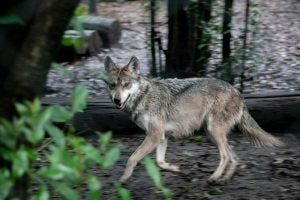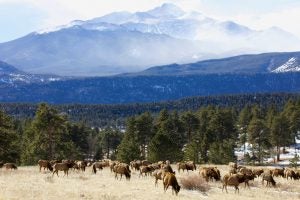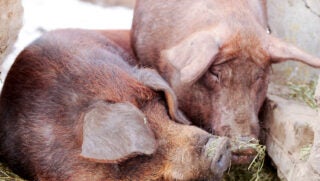Colorado released a plan last week to reintroduce wolves into the state for the first time in about 80 years — but what exactly is that plan? And, how is it being received?
On Friday, the Colorado Wolf Restoration and Management Plan was presented to Colorado Parks and Wildlife Commission. The new draft wolf management plan includes the release of 30 to 50 wolves in the state during the next five years following a ballot initiative (Proposition 14) that passed in November of 2020.
During a virtual meeting, Reid DeWalt, the assistant director for wildlife and natural resources for Colorado Parks and Wildlife, said, “This plan strikes a balance where wolves will be fully restored and those impacted by their release will be fully compensated.”
»Related: Wolf updates in the Western United States

Here are some key questions and highlights from the plan:
Where will the wolves come from? The reintroductions will begin by December 31, 2023, west of the Continental Divide. Colorado anticipates capture of 10 to 15 wild wolves annually from different packs over the next three to five years from Wyoming, Montana, and Idaho, and possibly Washington and Oregon.
Where will the wolves be released? According to the plan, wolves will be released over 60 miles from state borders to prevent migration to other states. The ideal locations included in the plan include: the south-central part of the state, a northern section including Interstate 70 between Vail and Gleenwood Springs on private or state land.
Will the wolves be protected? Wolves in Colorado are protected as an endangered species. Released wolves will be collared and counted in the winter to include any wolves in the state at the time.
How many wolves will be enough? The plan currently authorizes down listing of wolves from endangered to threatened after biologists count a minimum wintertime count of 50 wolves in the state for four consecutive years. Although the plan includes four phases, with a final phase that allows wolves to be classified as a game species, it states that “this phase can only be framed in general terms at this time because forecasting the details of this future is impossible using currently available information.”
How will producers be compensated for depredation? The plan proposes that funding for livestock producer compensation for wolf depredations will be secured from funding sources outside of hunting and fishing license sales. These compensations are said to pay out at 100 percent of the value of the depredated livestock up to $8,000, however, a two-tiered compensation ratio is presented. Ranchers could have a pair of options if they can prove wolves killed livestock including a payment of five times the value, or seven times the value of the livestock lost if the producer took steps to minimize conflicts.

Implications of wolf release
The written plan acknowledges that wolf reintroduction could have negative and positive implications, but admits that they cannot predict all impacts: “Not all impacts can be predicted, and that future management flexibility is crucial for adaptively managing impacts as they arise. With such uncertainty, the full gamut of potential management actions cannot be comprehensively identified this plan.”
While the Colorado Cattlemen’s Association writes that they will be reviewing the plan to advocate for protection of livestock and ensuring fair compensation for losses, a number of environmental advocates have released an alternative plan for Colorado. The proposed Wolf Restoration Plan in contrast, presents a population goal of at least 750 wolves throughout 12 pack zones including national parks, monuments, forests, and wilderness areas. The alternative plan provides very little by way of promises for compensation following livestock depredation.
The public can make comments online or attend meetings in January and February of 2023:
- January 19 – Colorado Springs
- January 25 – Gunnison
- February 7 – Rifle
- February 16 – Virtual
- February 22 – Denver


